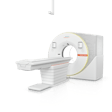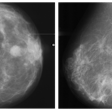CHICAGO – In an effort to gain market share in CT services, the radiology department of a Boston-based academic hospital set up an off-site location and posted a profit of more than $2 million.
Dr. Giles Boland, director of teleradiology at Massachusetts General Hospital (MGH), shared the results of his group’s effort to take bite out of the CT business that was being gobbled up by independent, free-standing imaging clinics in the area.
“They have taken an enormous amount of business from us, but they have done some things that we had to learn from,” Boland said in a presentation at the RSNA conference on Wednesday.
The goal was to provide convenient service to the patient, maintain high operating standards, and collect a portion of technical as well as professional fees.
“The question was, can we do that without alienating our own hospital?,” Boland said.
To that end, a multi-slice CT was installed in an off-site center. The abdominal subspecialty division provided on-site coverage. All other CT exams were transmitted via a T3 line back to MGH. Images also were sent back to the free-standing center for the radiologists to read, Boland said.
Cost-effectiveness was evaluated according to fixed costs, such as equipment leasing, utilities, and marketing. Variable costs included pharmaceutical supplies and a profit-sharing agreement with MGH.
According to the final analysis, total fixed costs were $1.2 million a year with a variable cost of $57 per study. The number of exams required a year to break even was 3,840 or 15 per day.
“The more studies you do, the more bang for your buck you’ll get,” Boland pointed out. For example, if 8,000 CT exams are done in a year, the cost per study is $35. If a center can do 10,000 exams per year, the cost drops to $28 per exam. Conducting 12,500 exams a year yields a cost of $22 per exam, he said.
In the first year at Boland’s site, the exam volume was 12,000 studies with a total cost of $1.7 million. Having generated $4.4 million in gross revenues, the final profitability stood at $2 million, he said.
One element Boland said was absolutely essential for running a successful free-standing site was to aggressively market the service to referring physicians.
“That’s the hardest thing to do,” he said. “We’ve had to hire people away from other free-standing imaging centers to do our marketing. It’s important to remember that you have to market constantly [to referring physicians]. You probably have to repeat [your message] a hundred times before it gets through.”
Session moderator Dr. Scott Gazelle asked what kind of response non-MGH radiologists had to this free-standing site. Boland said that the site had caused some grumbling among the radiologists at a nearby hospital.
However, the success of the CT center convinced MGH to open up another free-standing center, which is a multi-modality site. So far, MRI and CT exams are generating the greatest revenue, Boland added.
By Shalmali Pal
AuntMinnie.com staff writer
November 30, 2000
Copyright © 2000 AuntMinnie.com
Click here to view the rest of AuntMinnie’s coverage of the 2000 RSNA conference.
Click here to post your comments about this story.



















